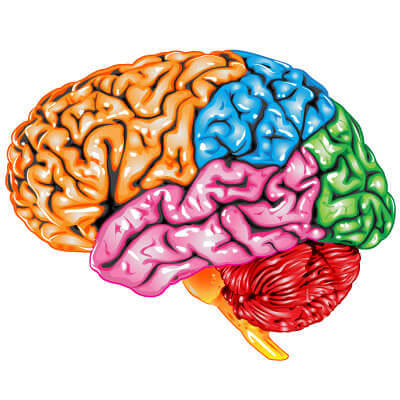Your Cart is Empty
- HOME
- THE BRAIN
- SERVICES
- ABOUT US
- CAREER
- FOR HOME CARE NEEDS
- Terms of Service
- Login
Brain injury is unpredictable in its consequences. Brain injury affects who we are and the way we think, act, and feel. It can change everything about us in a matter of seconds. The most important things to remember are:
The brain is divided into functional sections, called lobes:
Each lobe has an important and specific function, detailed below.
|
Frontal Lobes Functions (Orange)
An injury to the frontal lobes may affect an individual’s ability to control emotions, impulses, and behavior or may cause difficulty recalling events or speaking. Brain Stem Functions (Yellow)
The brain stem controls the body’s involuntary functions that are essential for survival, such as breathing and heart rate.
|
Temporal Lobes Functions (Pink)
An injury to the temporal lobes may lead individuals to demonstrate difficulty with communication or memory. Parietal Lobes Functions (Blue)
Individuals who have injured their parietal lobes may have trouble with their five primary senses. Cerebellum Functions (Red)
An injury to the cerebellum may affect balance, movement, and coordination. Occipital Lobes Functions (Green)
An injury to one’s occipital lobes may lead to trouble seeing or perceiving the size and shape of objects. |

The functional sections (lobes) of the brain are also categorized by side – the right side and the left side. If you split the brain down the middle into two equally-sized parts, they are not the same and do not carry the same functions. The right side of the brain controls the left side of the body, while the left side of the brain controls the right side of the body. Each side is responsible for different functions, and general patterns of dysfunction may occur depending on the side of the brain sustaining an injury.
The traits of each side are detailed below:
| LEFT SIDE TRAITS | RIGHT SIDE TRAITS |
|---|---|
Injuries of the left side of the brain can cause:
|
Injuries of the right side of the brain can cause:
|